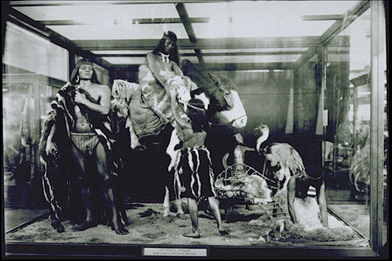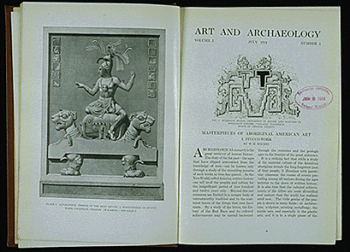An Artist's View: William Henry Holmes


 As a young artist living in Washington, William H. Holmes began sketching specimens for scientists at the U.S. National Museum. Based on that experience, he was invited to join the U.S. Geological
As a young artist living in Washington, William H. Holmes began sketching specimens for scientists at the U.S. National Museum. Based on that experience, he was invited to join the U.S. Geological
Survey of the Territories under the command of Ferdinand Vandiveer Hayden in 1872.
During his early years in the western territories, Holmes refined his skills as an artist, geologist, and acute observer. Intrigued by remnants of early societies he found in the cliffs of Arizona, he gradually shifted to archaeology.
After becoming honorary curator of aboriginal ceramics for the Museum, Holmes made his first field trip to Mexico in 1884, visiting Puebla, Cholula, Oaxaca, and Mexico City. He examined artifacts in Mexico's National Museum, and wrote that he "gave attention especially to pottery making and looked into the fabrication of imitations of old time wares." He excavated near the central RR in Mexico City and collected surface pot sherds. Later he traveled to the, and photographed excavations that had recently begun. On return Holmes published three influential articles, one on Teotihuacan stone sculpture and two on falsified Precolumbian pottery.
 |  |
In 1892, Holmes prepared exhibits for the four hundredth anniversary of Columbus's landfall, including displays of life-size figures of native Americans. The Tehuelche group in the photograph in this exhibition represents one of several dozen that he and his team constructed. Later, during a three year stint as head curator of anthropology at the Field Museum in Chicago, Holmes continued to investigate Precolumbian cultures. He visited and reported on the sites of Xochicalco in the state of Morelos; Mitla and Monte Alban in Oaxaca; Chichén Itzá and Tuluum on the Yucatan peninsula; and even Quirigua in Guatemala.

In 1897, as chief of the Bureau of American Ethnology, Holmes resumed fieldwork. With the geologists Dutton and Gilbert, he returned to Mexico in 1899 and visited obsidian mines to study flaked tools. The following year he traveled to Cuba and Jamaica, and in 1907 attended inter-American scientific meetings in Chile. He returned to Mexico the next year, again visiting the ancient city of Monte Alban and traveling as far south as Tiahuanaco in Bolivia. In 1916, at the age of seventy, he traveled in Guatemala and Honduras, studied Mayan architecture at Copan and collected more pottery.
Between 1909 and 1920 Holmes simultaneously held the positions Curator of anthropology at the United States National Museum and Curator of the Smithsonian's Gallery of Art. He became the Gallery's director in 1920 and continued until he retired at the age of 86.
While geological training had sharpened his intellect and embedded a sense of scientific rigor, Holmes brought quite another perspective to his archaeological reports - that of an artist. The precision of his drawings is astounding, and can be appreciated even in the smallest sketch book. He believed that archaeologists needed to grasp the fundamental principles of art in order to meet the demands of science. To determine the "authenticity of unidentified relics of primitive art" he laid out certain guidelines: "Every proper product of the shaping arts is intended for some normal use. In indigenous work, vessels made for use in the domestic arts are suitable to that end; those made for ceremonial purposes are adapted to that end, and are embellished with symbols suitable to their office.... Forms are not interchangeable and embellishments, especially those of an ideographic character, are not used indiscriminately."
His exceptional artistic skills allowed Holmes to document archaeological sites with fine sketches of architecture and artifacts. Ignacio Bernal, a leading Mexican archaeologist, praised the quality of Holmes' work during a period that was "neither scientific nor academic." Though Holmes did little excavation, "...his wonderful drawings and panoramas and his accurate discussion of architecture, ceramics and other objects make him essential reading even today" (Historia de la arqueologia de Mexico, 1979).




